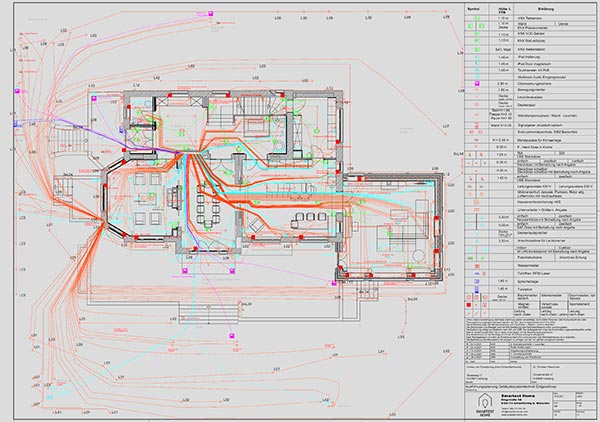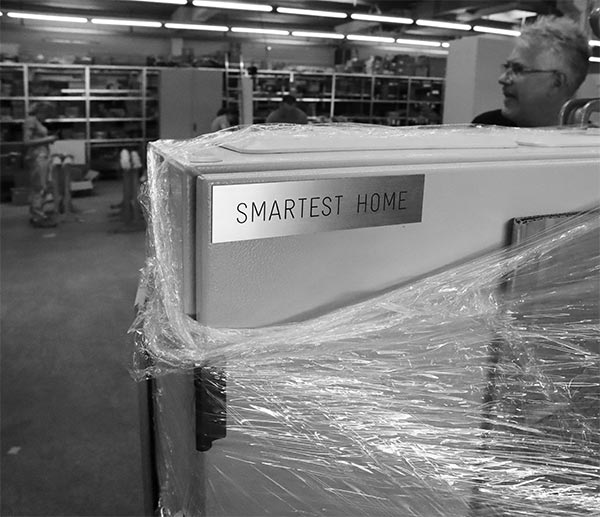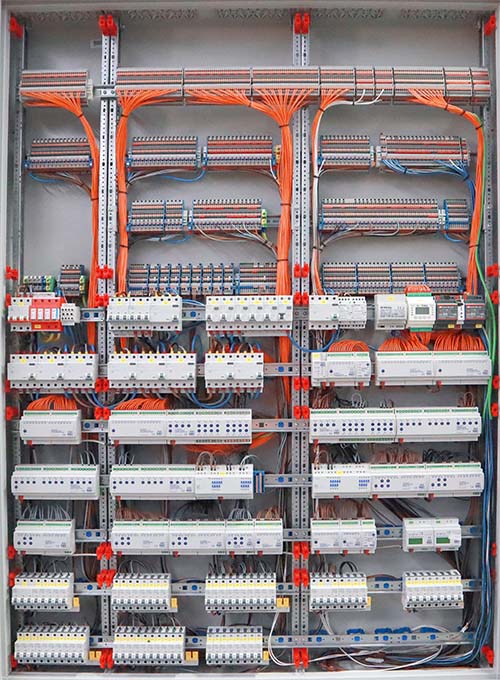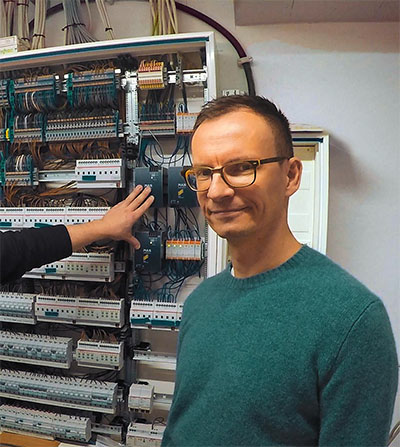DREAM OF HOUSE AS A MACHINE
A house as a machine, this idea has occupied me (Frank Völkel) since childhood. At that time we lived in an old villa. The charm of the building, the beautiful garden on the hillside, the baroque figures on the facade, all this gave my imagination a lot of scope.
But how the wind whistled through everywhere and in winter it was often bitterly cold! Whenever I watched my grandparents heating up the wood-burning stove, I thought it might as well be automatic.
A house should be like a big machine that would make life as comfortable as possible for the occupants: heat, light and protection, all regulated as if by themselves!
I only got to know Le Corbusier’s concept of the “living machine” years later and also understood that he used it more for an efficient use of space adapted to the individual functions. In any case, he wasn’t thinking of intelligent house control.
Pioneer
Networked building is not a matter of course today, 16 years ago most people had never heard of it

House Adapts To Residents
When I was planning my own first house, it was important to me that the rooms should be changeable and that they could be used and converted according to the phase of life or the family situation of the residents. And of course it should have a home control system based on KNX.
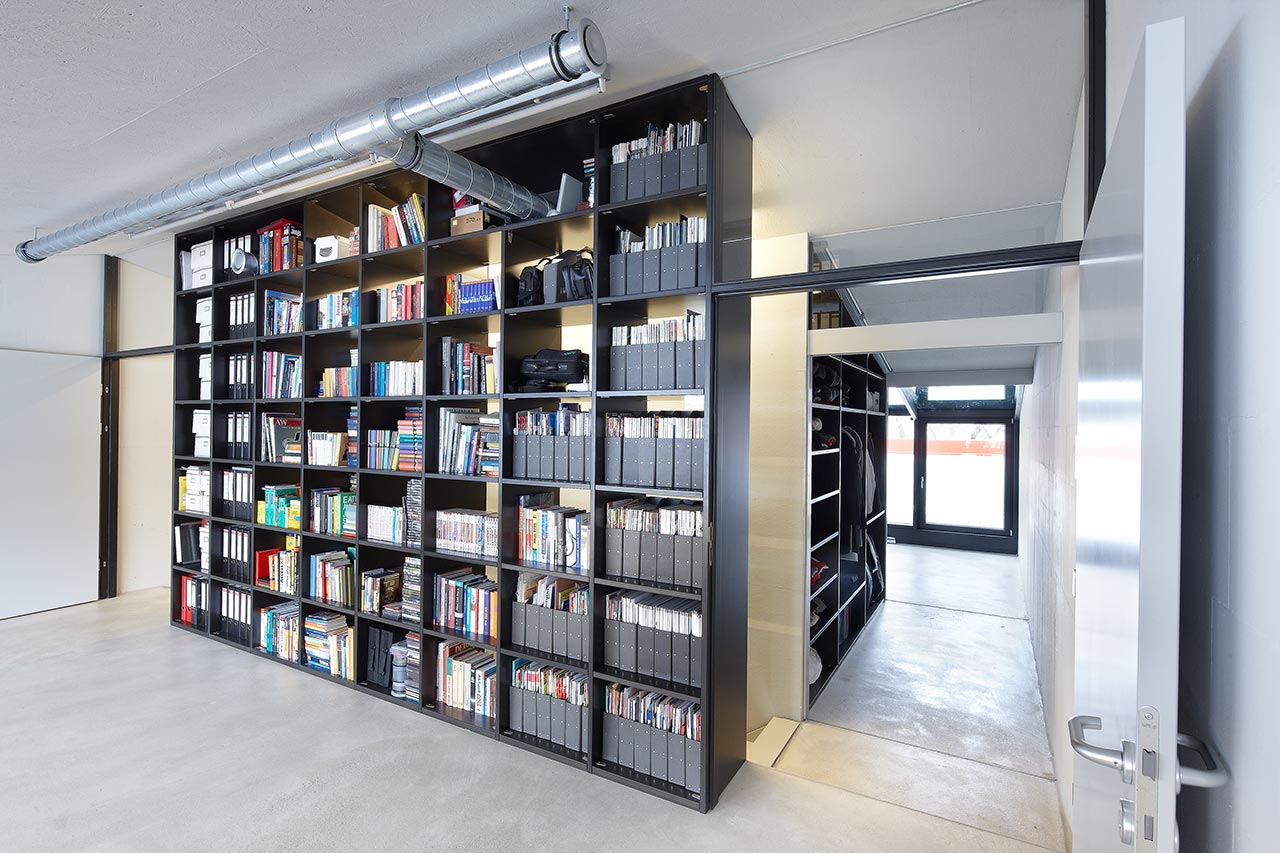
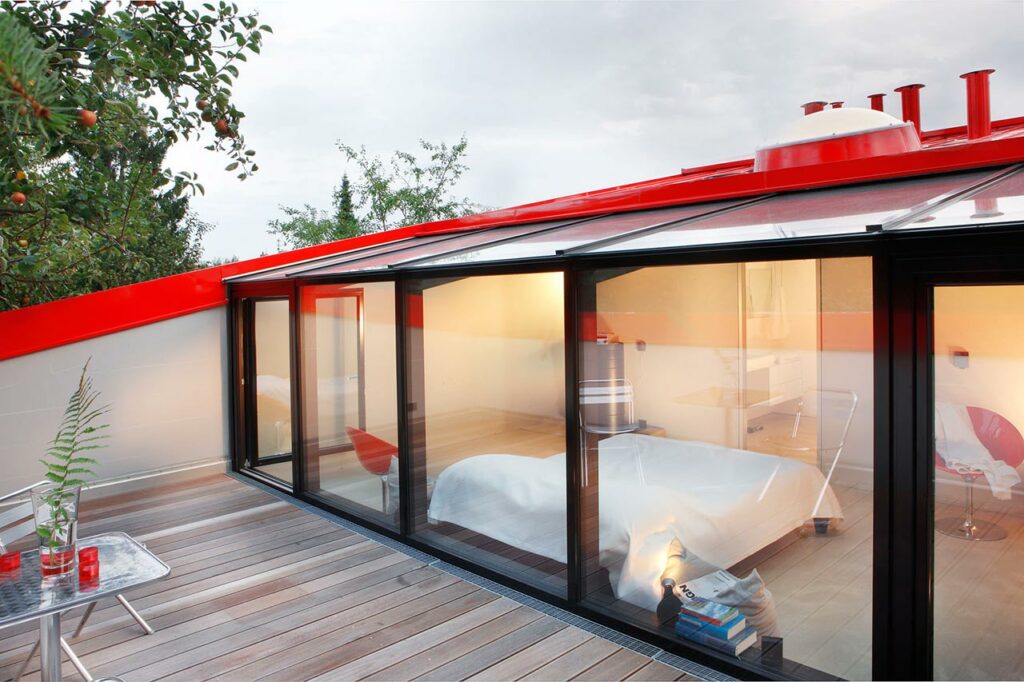
My house should remember, so to speak, who would like it warmer or cooler, who liked to listen to which music, which light scenes should come on automatically in the evening or when the heating should be turned down in which room!
Planned And Programmed By Myself
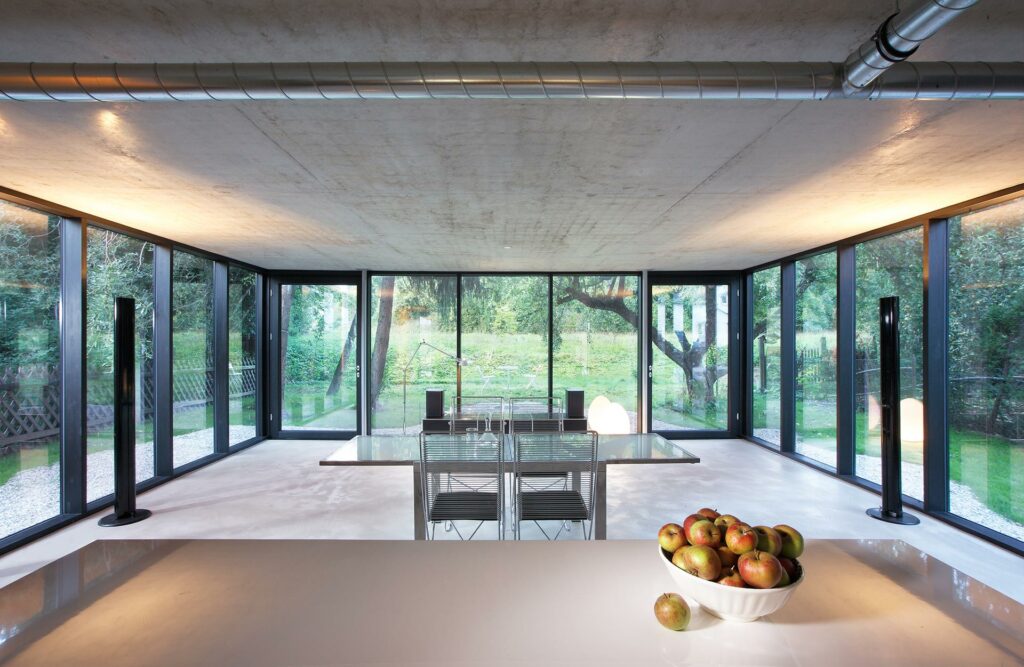
The thought from early childhood days went through my head again. My house should, so to speak, add wood by itself, it should give me light when I come home and offer my family a lot of protection. The integration of state-of-the-art building technology in the building was therefore a priority right from the conception stage.
I designed and planned my first smart home, incidentally the first smart home in the district of Munich. Networked construction is not a matter of course today, 16 years ago most people had never heard of it. That’s why I designed, planned and programmed everything myself. The way to the goal wasn’t easy.
I grew up with IT early on. When I was 13, my father gave me my first computer, a Commodore 64. Together with two buddies, I sat at this fascinating computer all night long. Sometimes we didn’t get to bed at all before we went to school in the morning. Gaming itself only interested us in the early days. After a short time we wanted to understand how the games are structured and program them ourselves.
At that time I laid the basis for my understanding of IT. Today I benefit a lot from the secret nights with my buddies. The Commodore 64 is one of the few items that I actually won’t be giving away, even though I haven’t done anything with it for a long time.
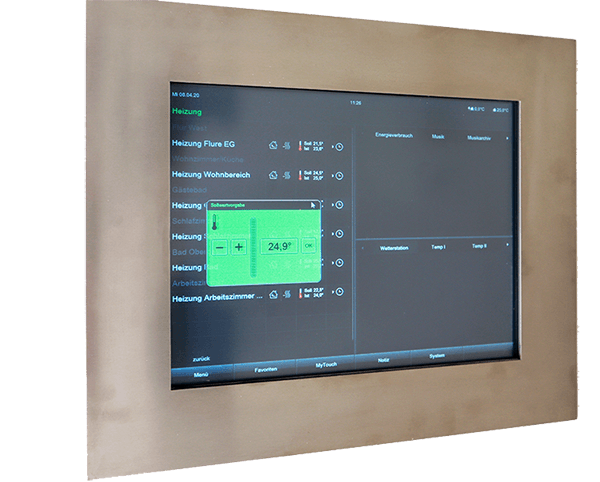
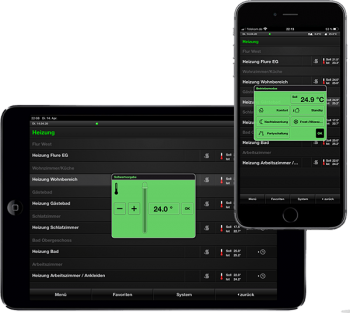
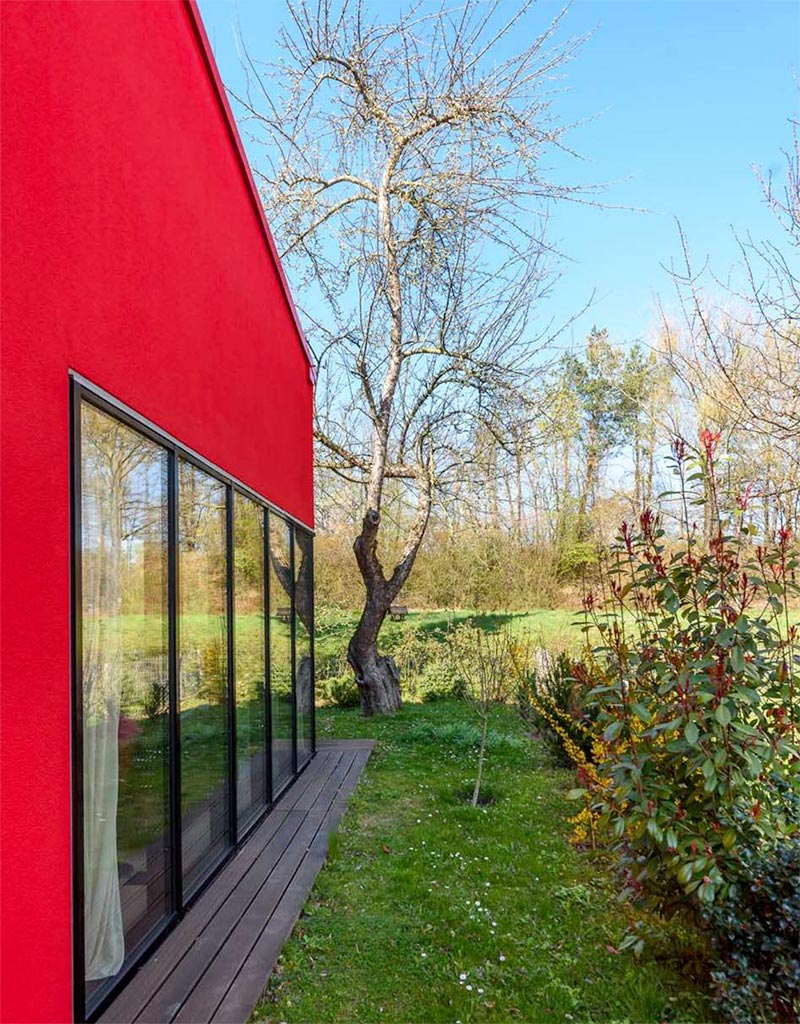
The control of an entire room: At that time, the visually reduced and technically well-equipped KNX pushbuttons Berker B.IQ stainless steel with display were used.
They were the only KNX buttons that I liked and that fit into the cool, reduced ambience!
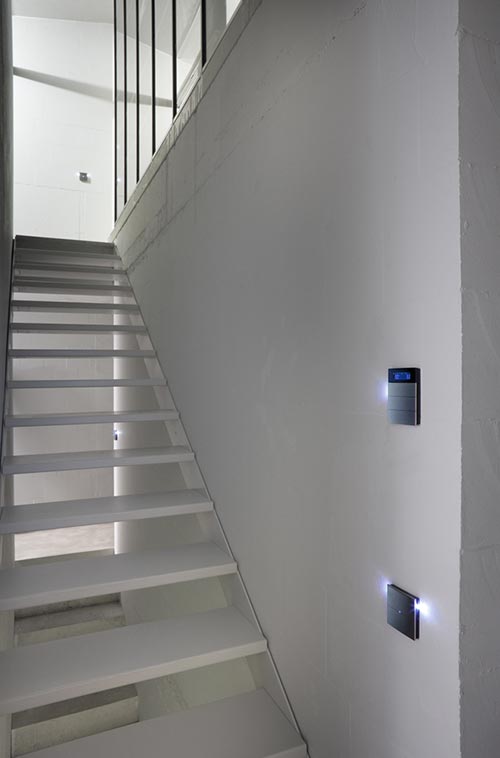
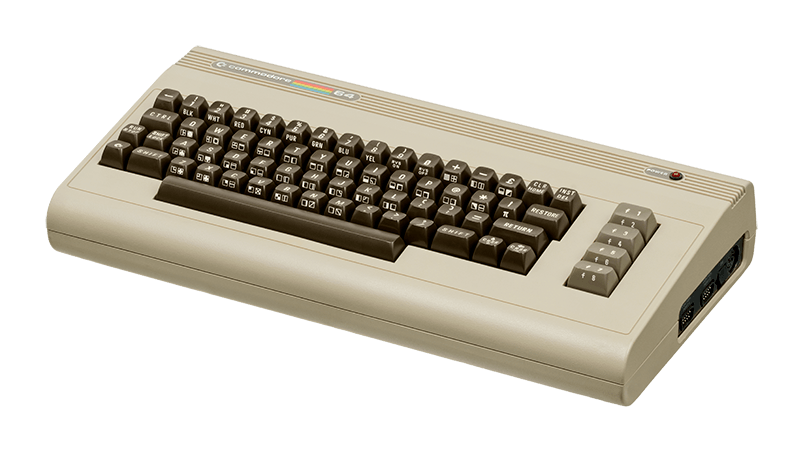
Since I couldn’t find an electrician at the time who was willing to learn something new, I laid every single cable myself.
Because the touchscreens for the Gira Homeserver didn’t even exist in the size I needed, I built them myself: From displays for supermarket checkouts. I controlled the home server with the first Apple iPhone, which I took with me when it premiered in 2007 in San Francisco (USA) and later cracked it for the German Telekom network because it wasn’t yet available on the German market.
In 2010 I used the first Apple iPad for home control and was really impressed by the graphic visualization.
I summarized the experiences I gained when building my first smart home in the book “Smart Home with KNX”. Since 2009, this book has helped many builders and electricians to implement a sustainable building with KNX.
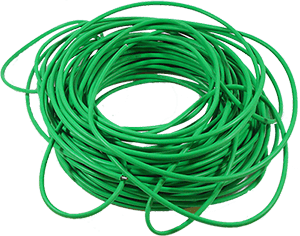
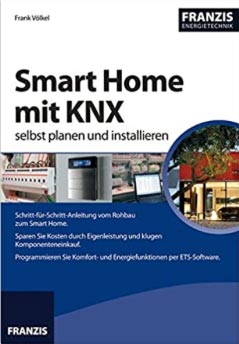
Novelty: Technology Shaft
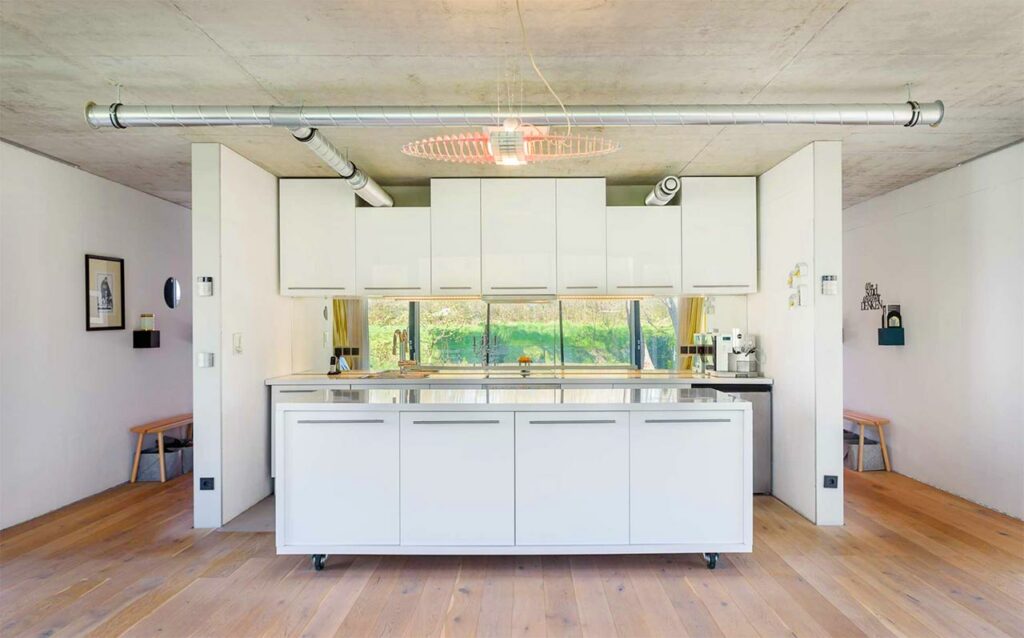
The supporting core is visible behind the kitchen. Behind it is the technical shaft. Just as all organs receive important impulses from the central nervous system of the human body, all electrical, heating, ventilation and sanitary lines supply the various living areas with life from a central technical shaft
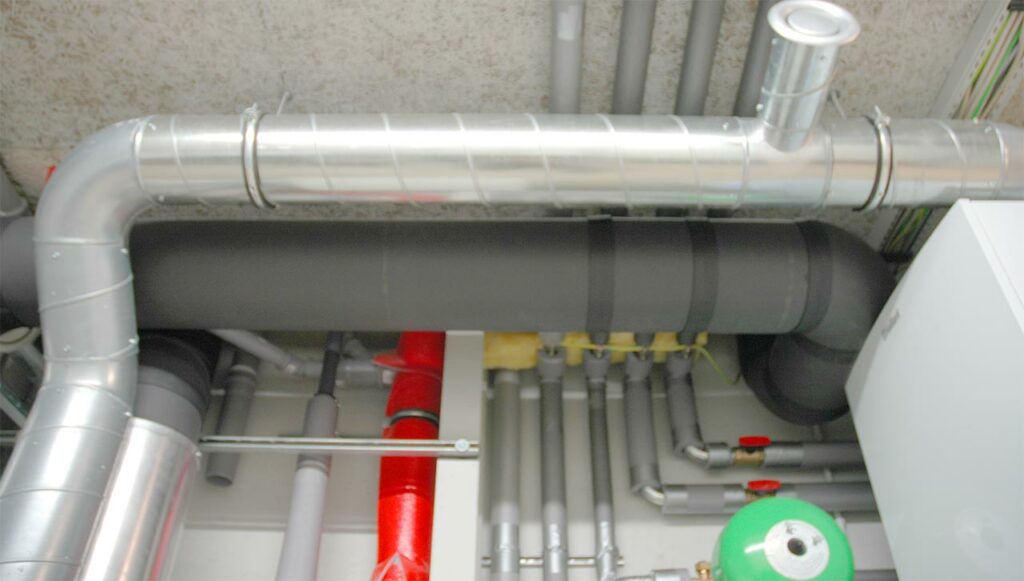
Backdrop For Films And Shootings
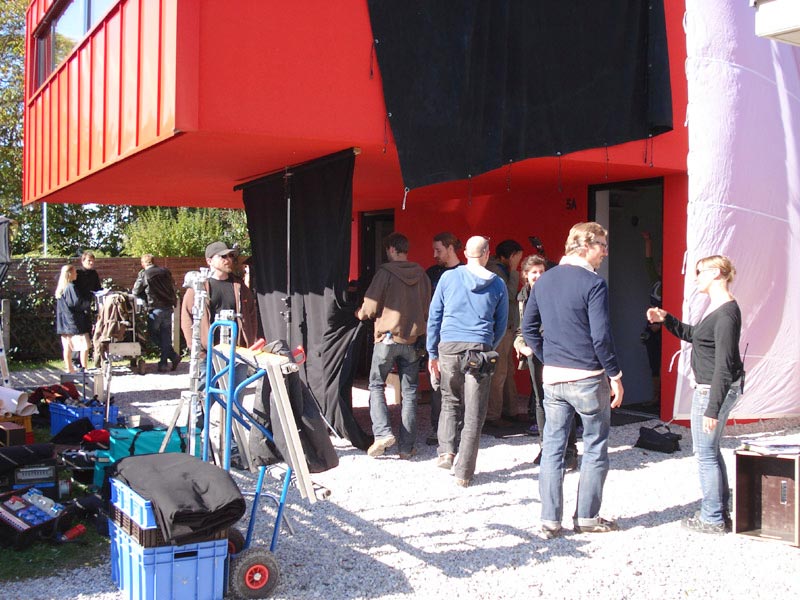
My red house was a wonderful combination of functionality and design. Perhaps Le Corbusier would have liked it, certainly the efficient use of space adapted to the individual functions.
The futuristic-looking house was therefore repeatedly requested as a location for photo shoots or filming, for example for the German cinema film “Dampfnudelblues”, which celebrated its debut in 2013.
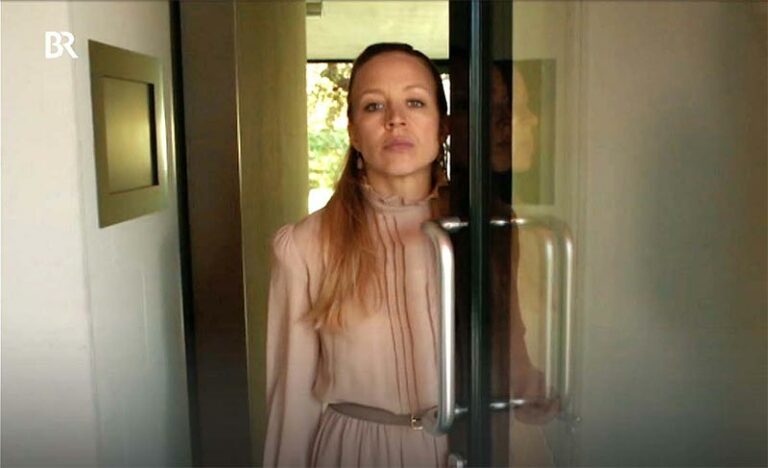
The house control ran via a wall-integrated 17 inch touch screen, which I built on the basis of a cash register display. A Gira Homeserver 3 acted as the KNX server, which could be controlled via iPhone, iPad and web browser. That was unique back then.
During the shooting of the movie “Dampfnudelblues”, the automatic blinds repeatedly caused astonishment: they adjusted to the position of the sun, which was a completely new world for the “lighters”. Another highlight for the “film police”: As soon as someone even approached the front door, there was a message via the visualization in the house.
The press and television were interested in the house, so that in a short time many publications were also published on the subject of “Smart Home with KNX”. I got the first inquiries for client projects.
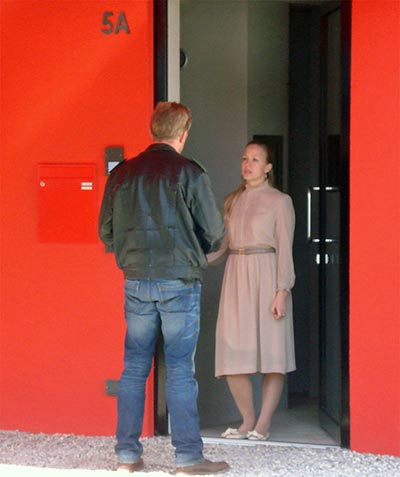
It went on: for example, the house was among the finalists in the “Bauwelt Preis 2009” competition. There was a program on Bavarian television in the “Abendschau” and media such as “Stern” or “Die Welt” reported about the house. The Süddeutsche Zeitung called the house an “example of successful architecture in Munich”.
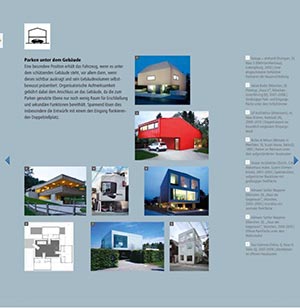
House With 100% Self-sufficiency?
Achieving a high degree of self-sufficiency in interaction with the networked KNX Smart Home is the basis of our current conception and planning.
This can be achieved, for example, with a comprehensive PV roof, the right dimensioned battery storage and an intelligent KNX control. Everything that is technically possible and feasible today in 2023 was not even remotely conceivable when I started.
We took the first steps with “test setups” that were continually revised over the months.
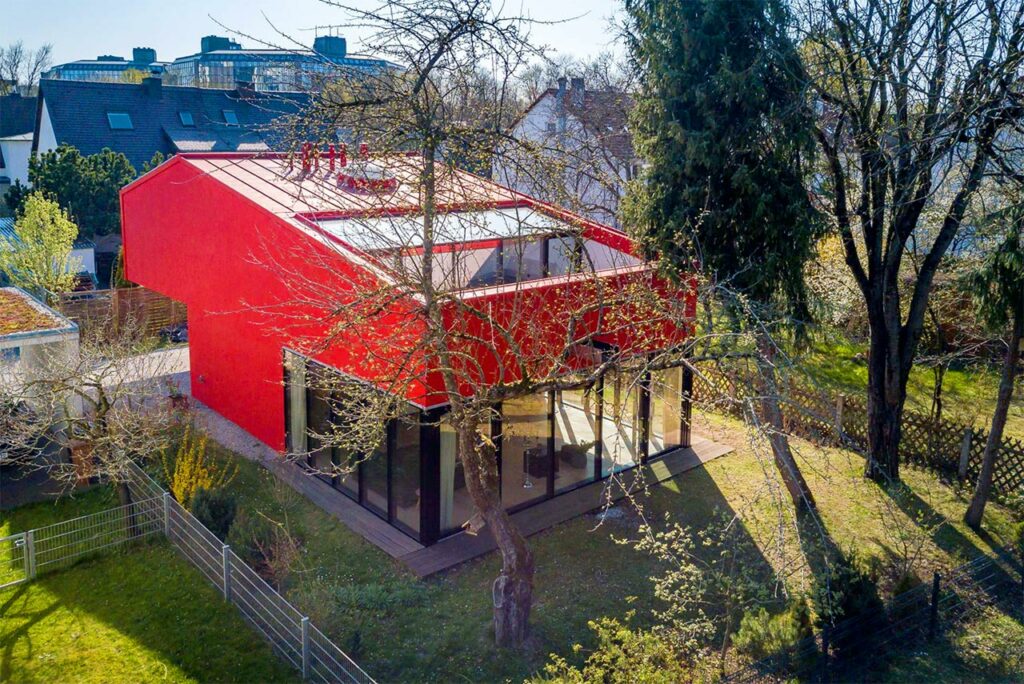
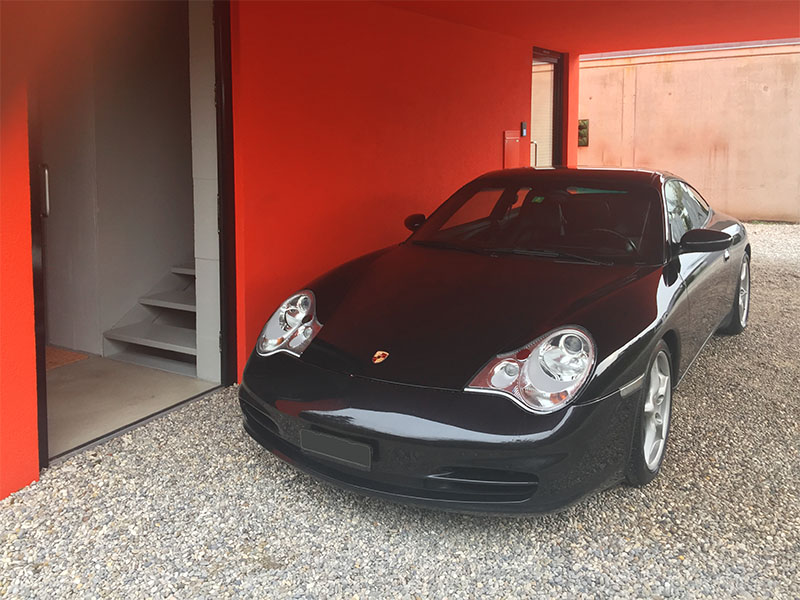
Concept & Planning: Home to High-end Villa
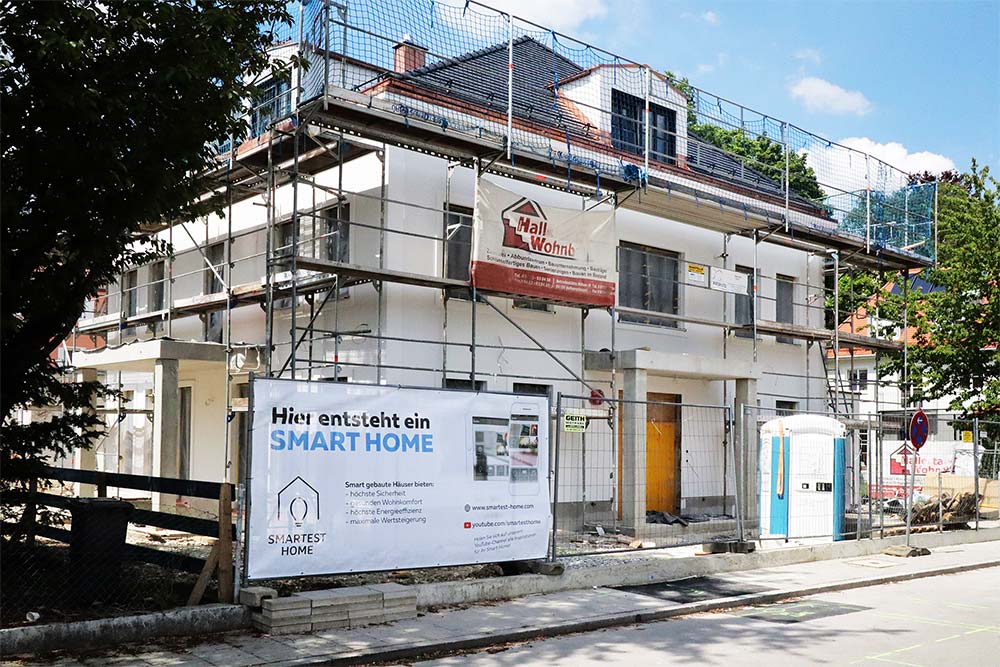
Most of our projects remain anonymous, many clients value privacy like we do. It’s very rare to see pictures like this one. In video posts on our YouTube channel “Smartest Home” and on social media, we often show technical details about individual family homes and villas.
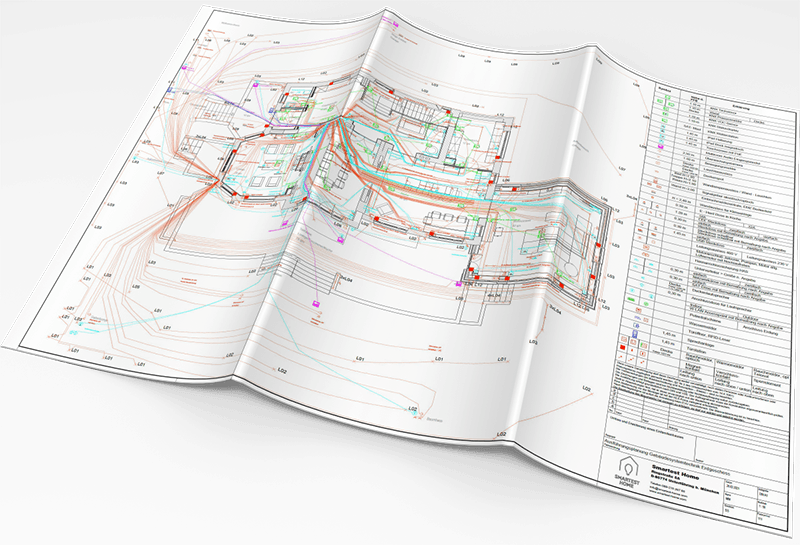
Speaking of electrical planning: Where there used to be a few lines and symbols, today complex planning with a cross-trade concept is necessary. Just one example: Architectural planning, interior design planning, garden planning, kitchen planning, bathroom planning and HLS are all integrated in the KNX/GS electrical planning.
The beginning was anything but easy. So I had to find the right software that would fulfill all the functions for our purposes and be fully compatible with trades such as architects/interior designers, HLS planners, garden planners, pool planners and kitchen planners when exchanging data. After a few failed attempts with special proprietary planning software, we decided to use AutoCAD as an important basis for CAD electrical planning. Ultimately, what matters is that everyone involved in the project can do something with a DWG data set. It is mainly about the 2D area, because 3D data can always be created from it later.
Simplicity is what matters when it comes to operating and controlling a house in 2023. For example, the energy balance can be called up at a glance in real time at any time. energy balance? Put simply, what goes in and what goes out. Compared to when I started 16 years ago, the controls have become much more perfect, clearer and faster.
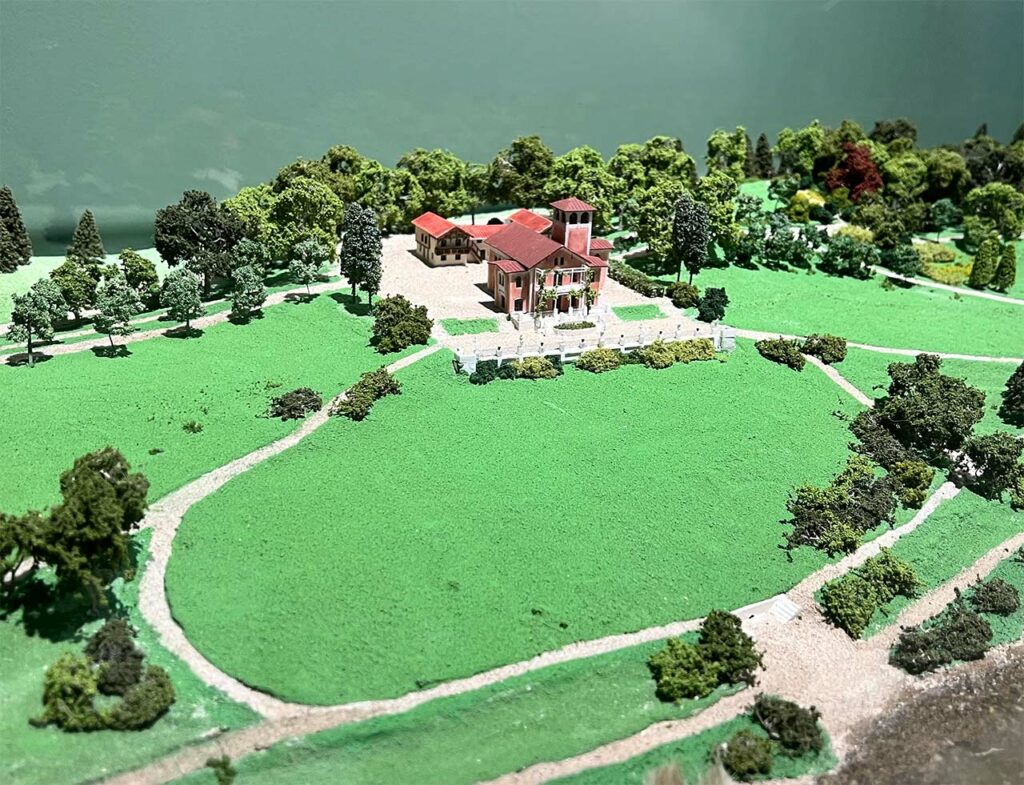
Even historical buildings like this small castle are taken to a whole new level with a KNX network and individually adapted equipment (e.g. heating, scenic lighting, door and window contacts). The conception and planning is similar to that of an old building or a classic villa. In addition, there are peculiarities of the building to be considered, for example when pulling cables through very thick walls, the dimensions of which differ greatly from today’s buildings.
Existing usable plans? Usually doesn’t exist.
Over the years, our electrical planning has become increasingly complex and demanding. On the one hand, this is due to the possibilities in terms of technical equipment and, on the other hand, to the high demands of the builders. Just one example for a larger private house: From the conception and planning to the move-in of the client, 18 months can easily pass! In between there is extensive coordination with the other trades such as architectural planning, interior design planning, heating, air conditioning, light planning/lighting, ventilation system design, etc. In order to develop detailed solutions that work properly, we need a lot of knowledge about the interaction of the individual components and experience with other similar projects. In some cases, test setups in the laboratory environment provide us with important insights in order to get the perfect detailed solution for the client. It is not uncommon for this to involve a great deal of time.
This often involves very personal things that are important to the client and for which there is no out-of-the-box solution.
The vast majority of electricians in “upscale” single-family homes – as I would like to call it – are happy that they have our detailed planning documents and specifications for components and can devote themselves to the actual business – the installation.
Smart Home Villa?
In the past few years I have dealt intensively with the topic “Smart Home Villa”. On the one hand, this is due to the demanding client projects that we were able to completely plan and bring to life and, on the other hand, to the inquiries about architects who were looking for a technical Smart Home concept for clients. It’s not that easy to get to the point, but I often say: Compared to a “normal” single-family house, everything in a Smart Home Villa is larger and of higher quality. There are simply more electrical components in the home and outdoors. I have more details in the article “What is a Smart Home Luxury Villa?” summarized from my own builder experiences, which is constantly updated.
Thanks to demanding builders who entrust us with the design and planning of their intelligent houses, we learn and develop every day.
We are allowed to serve inquiries from builders for individual houses throughout Germany and Switzerland.
The focus is on demanding advice with manufacturer neutrality, coordination with all other trades and closeness to the client.
